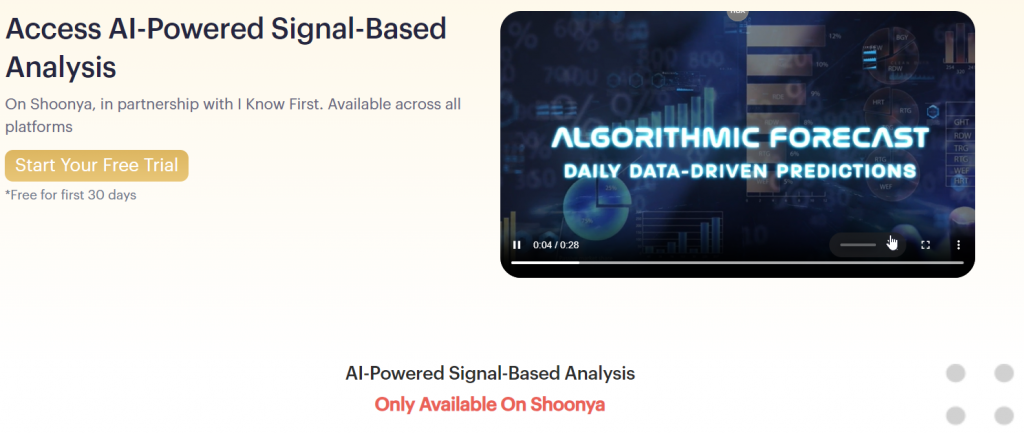20 Top Facts For Choosing AI Stock {Investing|Trading|Prediction|Analysis) Sites
Top 10 Tips On Assessing The Ai And Machine Learning Models In Ai Stock Predicting/Analysing Trading PlatformsThe AI and machine (ML) model used by stock trading platforms as well as prediction platforms should be evaluated to ensure that the data they offer are reliable trustworthy, useful, and applicable. Models that are poorly constructed or overly hyped-up can result in flawed predictions and financial loss. Here are 10 suggestions to assess the AI/ML platforms of these platforms.
1. Understand the Model's Purpose and Approach
A clear objective: Determine if the model was designed for short-term trades, long-term investments, sentiment analysis, or risk management.
Algorithm transparency - Check to determine if there are any disclosures about the algorithms (e.g. decision trees neural nets, neural nets, reinforcement, etc.).
Customization. Examine whether the model's parameters are tailored according to your own trading strategy.
2. Evaluation of Performance Metrics for Models
Accuracy: Verify the accuracy of the model when it comes to the prediction of future events. However, do not solely use this measure as it may be inaccurate when applied to financial markets.
Recall and precision: Determine how well the model can identify true positives (e.g., correctly predicted price movements) and minimizes false positives.
Risk-adjusted gains: Examine whether the assumptions of the model can lead to profitable transactions, after taking into account risk.
3. Test the model by Backtesting
History of performance The model is tested using historical data in order to assess its performance in prior market conditions.
Examine the model using data that it hasn't been trained on. This will help to stop overfitting.
Analysis of scenarios: Check the model's performance during various market conditions (e.g., bear markets, bull markets, high volatility).
4. Be sure to check for any overfitting
Overfitting Signs: Search for models that do exceptionally in training, but perform poorly when using untrained data.
Regularization techniques: Determine if the platform uses techniques such as L1/L2 regularization or dropout to avoid overfitting.
Cross-validation is a must: the platform should make use of cross-validation when evaluating the model generalizability.
5. Examine Feature Engineering
Relevant features - Check that the model is using important features such as price, volume or technical indicators. Also, look at the macroeconomic and sentiment data.
Select features with care It should include statistically significant data and not irrelevant or redundant ones.
Updates to features that are dynamic: Find out if the model can adapt to changes in market conditions or new features over time.
6. Evaluate Model Explainability
Interpretation: Make sure the model is clear in explaining the model's predictions (e.g. SHAP values, the importance of features).
Black-box Models: Be cautious when you see platforms that use complicated models that do not have explanation tools (e.g. Deep Neural Networks).
User-friendly insights : Find out if the platform is able to provide actionable information in a form that traders can comprehend.
7. Assess the Model Adaptability
Market changes: Verify whether the model is able to adapt to market conditions that change (e.g., changes in rules, economic shifts, or black swan occasions).
Examine if your system is updating its model on a regular basis by adding new data. This will improve the performance.
Feedback loops - Ensure that the platform incorporates real-world feedback as well as user feedback to improve the model.
8. Check for Bias in the Elections
Data biases: Check that the data used in training are accurate and free of biases.
Model bias - Determine whether your platform is actively monitoring the biases and reduces them in the model predictions.
Fairness. Be sure that your model doesn't unfairly favor specific industries, stocks, or trading methods.
9. Assess the efficiency of computation
Speed: Check whether the model produces predictions in real-time with minimal latency.
Scalability: Check whether the platform is able to handle large datasets with multiple users, without performance degradation.
Resource usage: Check whether the model makes use of computational resources effectively.
Review Transparency, Accountability, and Other Problems
Model documentation: Ensure the platform has a detailed description of the model's structure as well as the training process and the limitations.
Third-party audits: Check if the model has been independently validated or audited by third-party audits.
Error handling: Check that the platform has mechanisms to detect and correct mistakes or errors in the model.
Bonus Tips:
Case studies and user reviews Review feedback from users as well as case studies in order to assess the performance of the model in real-life situations.
Trial period: Use the demo or trial version for free to test the model and its predictions.
Support for customers - Ensure that the platform is able to provide a robust support service to help you resolve technical or model related issues.
Follow these tips to assess AI and ML models for stock prediction and ensure they are trustworthy and transparent, as well as compatible with trading goals. View the most popular stocks ai hints for blog examples including ai trader, chatgpt copyright, ai trading software, ai stock market, best ai for trading, ai stock trading, ai trade, incite ai, ai investment platform, ai stock prediction and more.

Top 10 Tips For Assessing The Regulatory Compliance Of Ai Stock Predicting/Analyzing Trading Platforms
The regulatory compliance is a crucial element when it comes to considering AI platform for analyzing and predicting stocks. Compliance ensures that the platform operates within legal frameworks, protects user data, and adheres to financial regulations, thus reducing the risk of legal issues or financial penalties. Here are the top 10 tips for evaluating the regulatory compliance of these platforms:
1. Verify License and Registration
Regulators: Check that the platform has been certified and registered with relevant financial regulatory authorities (e.g. SEC in U.S.A., FCA UK, ASIC Australia).
Verify the broker relationship If your platform is integrated with brokers or brokers, you need to make sure they are licensed and regulated.
Public records: Check the website of the regulator to find the status of registration for the platform and any previous violations.
2. Take Data Privacy Measures Compliance
GDPR - If your platform operates within the EU and/or serves users from the EU make sure that it complies with GDPR.
CCPA : California Consumer Privacy Act (CCPA) compliance should be checked by the users.
Data handling policy: Make sure you read the privacy policies to learn the ways in which data of users is collected and stored.
3. Assess Anti-Money-Laundering (AML) Actions
AML policies: Ensure the platform has robust AML policies that are in place to prevent and detect cash laundering.
KYC Procedures: Verify whether there are procedures on the platform to confirm users' identities.
Review the platform's transaction monitoring. Does it track transactions and report suspicious activity to the authorities?
4. Make sure you're in compliance Trading Regulations
Market manipulation: Verify that the platform is equipped to prevent market manipulation, such as washing trading, spoofing.
Order types: Check if the platform is in compliance with the regulations applicable to order types (e.g. no illegal stop-loss hunt).
Best execution: Check if the platform is in line with the highest standards of execution, and ensures that transactions are executed at the highest price available.
5. Cybersecurity Assessment
Data encryption: Ensure that the platform is encrypted to safeguard your personal information while it is in transit as well as in rest.
Incident response Response to incidents Verify the platform's plan to react in the event of data breaches or cyberattacks.
Certifications - Check to see whether your platform holds any cybersecurity certifications.
6. Transparency and disclosure: A Study
Fee disclosure: Ensure the platform clearly discloses any fees, hidden or additional charges.
Risk disclosure: Verify whether the platform includes explicit risks disclosures. Particularly for high-risk and leveraged trading strategies.
Performance reporting: Check whether the AI platform's models are clear and accurately recorded.
7. Verify that you are in compliance with International Regulations
Cross-border trading When you conduct business internationally, ensure your platform is compliant with the regulations in all relevant jurisdictions.
Tax reporting: Check whether there are tax reporting reports or tools to assist you with the tax regulations.
Sanctions compliance: Ensure that the platform is compliant to international sanctions and does not allow trading only with the countries or entities that are banned.
8. Examine the records-keeping and audit trail
Transaction records: Ensure the platform maintains detailed records of all transactions to be used for audits and regulatory purposes.
Recordings of user activity: Check whether the platform records user activity including logins or trades, as well as any changes to the account settings.
Audit readiness: Find out whether your system can produce the required logs and documentation in the event of a regulatory inspection.
9. Assess compliance with AI-Specific Regulations
Algorithmic rules of trading: If a platform supports algorithmic trading, it has to be in compliance with European regulations, such as MiFID II and U.S. Reg SCI.
Fairness and bias: Determine if the platform monitors and corrects biases within its AI models to ensure ethical and fair trading.
Explainability: In accordance with specific regulations, the system should provide clear explanations of AI-driven decisions and predictions.
10. Review feedback from users and review the regulatory history
User reviews: Conduct user research to evaluate the reputation of the platform in terms of legal conformance.
History of regulation: Determine whether the platform has a past history of violations by the regulatory authorities and penalties, fines or fines.
Third-party auditors: Check if the platform is regularly audited by third-party auditors to ensure it's adhering to the rules.
Bonus Tips
Legal consultation: Talk to an expert in law on the conformity of the platform to applicable laws.
Free trial period: You are able to avail a demo or a free trial to test the features that ensure compliance of the platform as well as its documentation.
Customer support: Ensure that the platform has support for compliance-related queries or issues.
The following tips can assist you evaluate the compliance with regulations for an AI stock-predicting/analyzing trading platform. You'll be able to pick a system that is compliant with legal frameworks while protecting your security. Compliance with the law reduces risk to the public and increases confidence on the platform. Check out the top rated he has a good point on stock analysis app for site info including ai trading platform, ai stock picks, ai copyright trading bot, trader ai intal, ai trading bot, chatgpt copyright, best artificial intelligence stocks, best ai trading app, getstocks ai, ai chart analysis and more.
